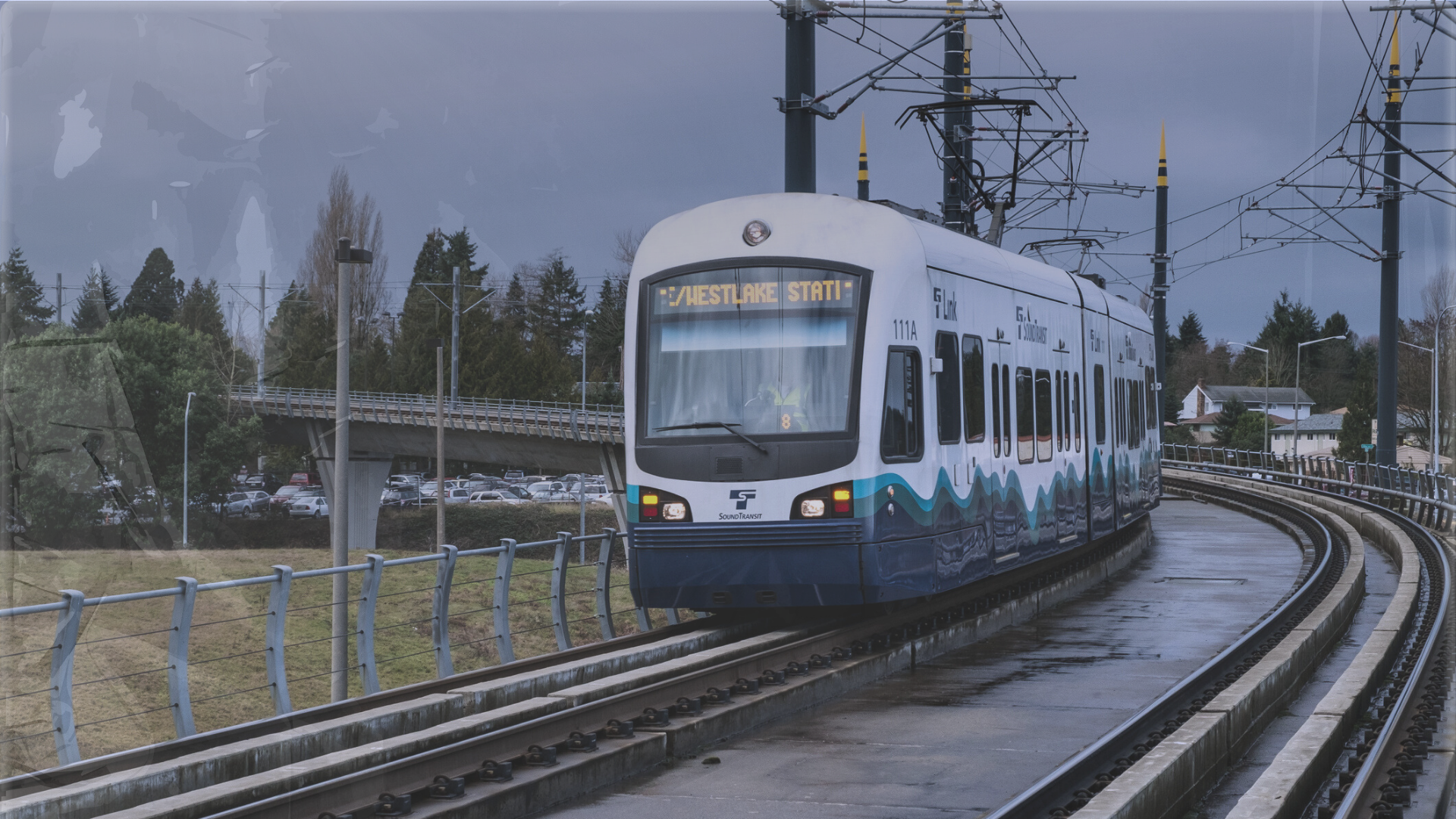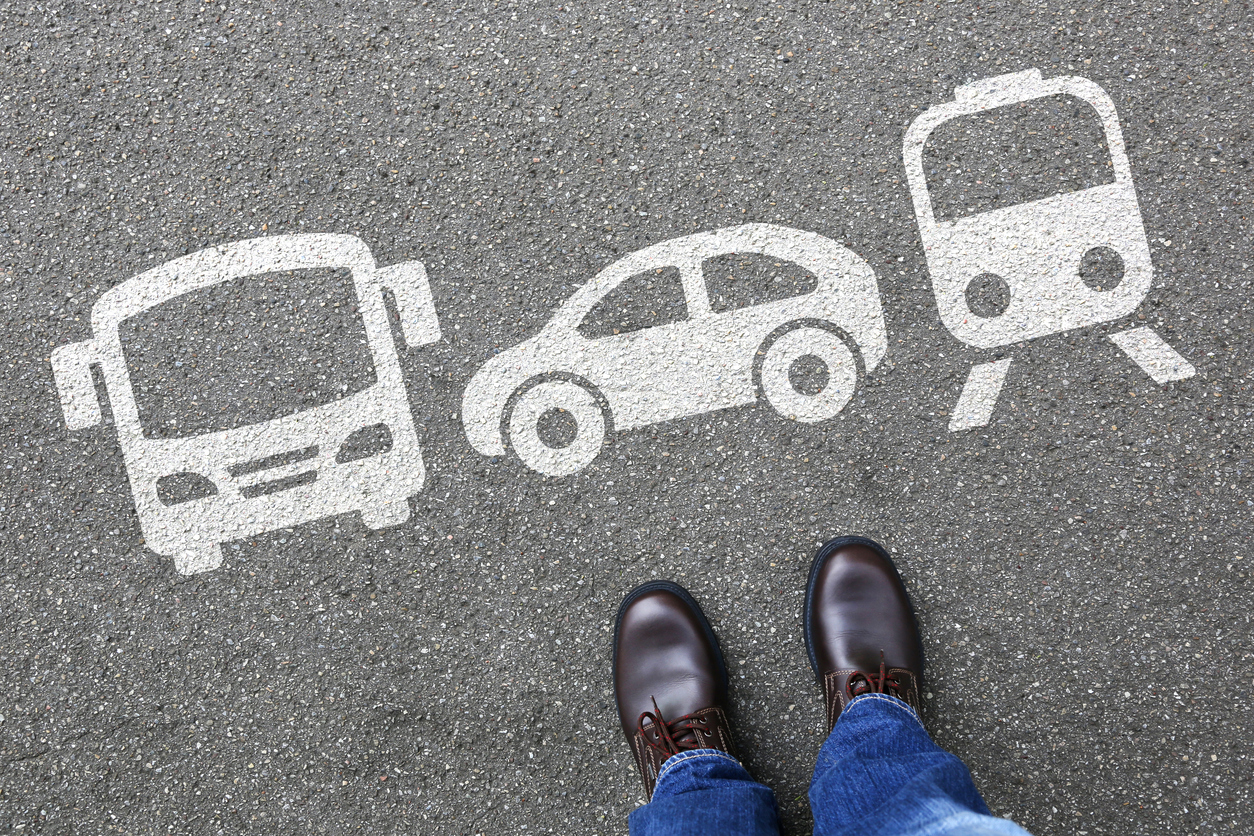- Traffic congestion is expected to increase whether light rail is built or not.
- Sound Transit officials found that the $1.4 to $2.0 billion light rail extension from Northgate to Lynnwood would only reduce the amount people drive by 0.28 percent.
- The up-to $2.0 billion light rail expansion to Lynnwood would reduce CO2 emissions by only 76,285 metric tons per year, 20 years from now.
- Buying CO2 reduction credits would achieve the same level of emissions reduction every year for a thousand years and would still cost less than light rail.
- The University Link station is not “early and under budget.” Sound Transit promised voters in 1996 to have University Link operating by 2006, not 2016. The agency issued a new deadline when they realized they would break their original promise to voters.
- Changing climate change and reducing traffic congestion are laudable goals. Yet the data show that spending more tax money on light rail is not an effective way to achieve these goals.
Three elected officials serving on Sound Transit’s Board recently penned an editorial in The Seattle Times calling for a $15 billion increase in regressive taxes to build more light rail. Tacoma Mayor Marilyn Strickland, Everett City Councilmember Paul Roberts and Redmond Mayor John Marchione argue that building light rail is an effective way to reduce carbon emissions and improve mobility. They also compare the capacity of light rail to freeways and talk about Sound Transit’s project delivery history.
Washington Policy Center found a few unsupported assertions in their editorial:
Traffic congestion would likely increase whether light rail is built or not
Claim: “Light-rail extensions also drive growth to urban centers where people rely less on cars, further reducing congestion and pollution.”
And;
Claim: “More mass transit would benefit riders, drivers and freight-movers alike.”
Fact: In addition to raising the property tax and sales tax rates, Sound Transit officials want to raise the unpopular Motor Vehicle Excise Tax on drivers from 0.3 percent of a vehicle’s value to 1.1 percent. That’s a new, $225 million annual tax increase on drivers residing in Sound Transit’s taxing district. The title of their column, “How to get Puget Sound traffic moving: Allow a vote on a package to fully fund light rail,” suggests that new taxes like the MVET would come back to benefit drivers by improving traffic flows.
However, environmental groups like Sightline say that transit does not reduce traffic congestion. Even Sound Transit CEO Joni Earl admits that more light rail will not provide congestion relief. She said, “We’ve never said we will reduce congestion.”
The most recent study on expanding rail to Lynnwood shows she was right. A formal review of the $1.4 to $2.0 billion Lynnwood Link project finds that congestion on urban freeways would remain whether or not light rail is built. The project’s Final Environmental Impact Statement found, “Freeway congestion and unreliable travel times would still occur,” and that, “congested conditions would still remain,” no matter what light rail route is chosen.
Sound Transit’s own projections show the amount people drive 20 years from now would only decrease by 0.28 percent after spending $1.4 to $2.0 billion on building rail to Lynnwood.

When people travel, they choose light rail less than 1 percent of the time. Federal estimates show people in the average household make 9.5 trips per day. Within Sound Transit’s district, that equals 3.9 billion total trips every year. Sound Transit’s total light rail ridership last year was approximately 11 million, or 0.28 percent of all trips people made in the taxing district. The Puget Sound Regional Council estimates that, even after light rail is vastly expanded, light rail would carry less than 1 percent of daily trips by 2040.
Officials say they are planning for traffic congestion to increase with or without light rail. Actually, Sound Transit officials may benefit from traffic congestion – by comparison it makes their light rail service look more attractive.
Claim: “A light-rail line can move up to 12,000 people per hour in each direction. Compare that to a highway lane that moves as few as 700 vehicles per hour in heavy congestion.”
Fact: This is an apples-to-oranges comparison. The authors compare hypothetical light rail person-capacity to actual vehicle throughput on an existing travel lane in extreme congestion.
To illustrate this fallacy: When given a choice between an empty suitcase with the capacity to hold $1 million and a wallet containing $100 dollars, I’ll take the wallet.
To reach their projections, the authors assume four car rail trains, operating with full cars of 150 passengers each, running at three-minute headways (4 x 150 x (60/3) =12,000).
A lane of highway has the capacity to carry about 2,000 vehicles per hour. Using the same methodology, cars at full capacity (five people per vehicle), one freeway lane can move 10,000 people per hour. And that’s just with passenger cars. Include large vanpools and buses, and a freeway lane has a much higher capacity than a light rail line.
Light rail is not an effective way to reduce carbon emissions
Claim: “It [light rail] is among the best things we can do to attract more jobs, connect major cities and job centers, and improve the air we breathe.”
And;
Claim: “Every commuter who chooses congestion-free light rail is someone who will help stretch our road capacity and reduce Washington’s carbon pollution, two-thirds of which comes from transportation.”
Fact: Light rail is one of the least effective and most expensive ways to reduce carbon emissions.
Voters approved the second light rail tax package in 2008. Sound Transit officials are still implementing those plans and recently released their analysis on a major project in the package, the Lynnwood Link rail extension. Their planned extension from Northgate to Lynnwood would cost between $1.4 billion and $2.0 billion to construct and millions more to operate.

According to Sound Transit’s Lynnwood Link Final Environmental Impact Statement, building the 8.5 mile light rail extension from Northgate to Lynnwood would reduce CO2 emissions by 209 metric tons daily or 76,285 metric tons annually.Using the conservative construction cost estimate of $1.4 billion for Lynnwood Link, that’s a cost of $612 per metric ton of CO2 reduction over 30 years. That does not include the cost to operate the rail line which would drive the cost per reduced metric ton even higher. Further, this analysis does not include the energy involved in building the light rail line, which would reduce the total CO2 reduction achieved by the projects.
Terapass, a nationally known firm that helps people invest in carbon-reduction projects, charges $13.12 to remove one metric ton of carbon emissions from the atmosphere. Offsetting 76,285 metric tons of CO2 pollution at Terrapass would only cost about one million dollars per year.
To put it another way, the money Sound Transit officials want to spend on light rail could buy carbon offsets from programs like Terrapass for over one thousand years, improving air quality far beyond the 30 to 50 year lifespan of light rail.
Claim: “Sound Transit has developed an excellent reputation for delivering major projects on time and under budget. The University Link light-rail station will open in early 2016, six to nine months ahead of schedule and $150 million under budget.”
Fact: Although Sound Transit has improved their reputation by acknowledging past troubles, this oft-repeated line is misleading. Sound Transit officials promised voters they would deliver University Link by 2006, not 2016. Sound Transit officials simply moved the goal posts and now say they’re early.
In addition, Sound Transit officials promised a 45th Street station beyond the current University Link endpoint, a project they have delayed 15 years to 2021.
Originally, Sound Transit officials promised they would to spend $2.3 billion in year of expenditure dollars for the 21 miles of rail. Yet by the time the “starter line” is complete, officials will have spent closer to $5.3 billion.
Changing climate change and reducing traffic congestion are laudable goals. Yet the data show that spending more tax money on light rail is not an effective way to achieve any of these goals. Light rail may have benefits, but significantly changing climate change and eliminating traffic jams are not among them.




